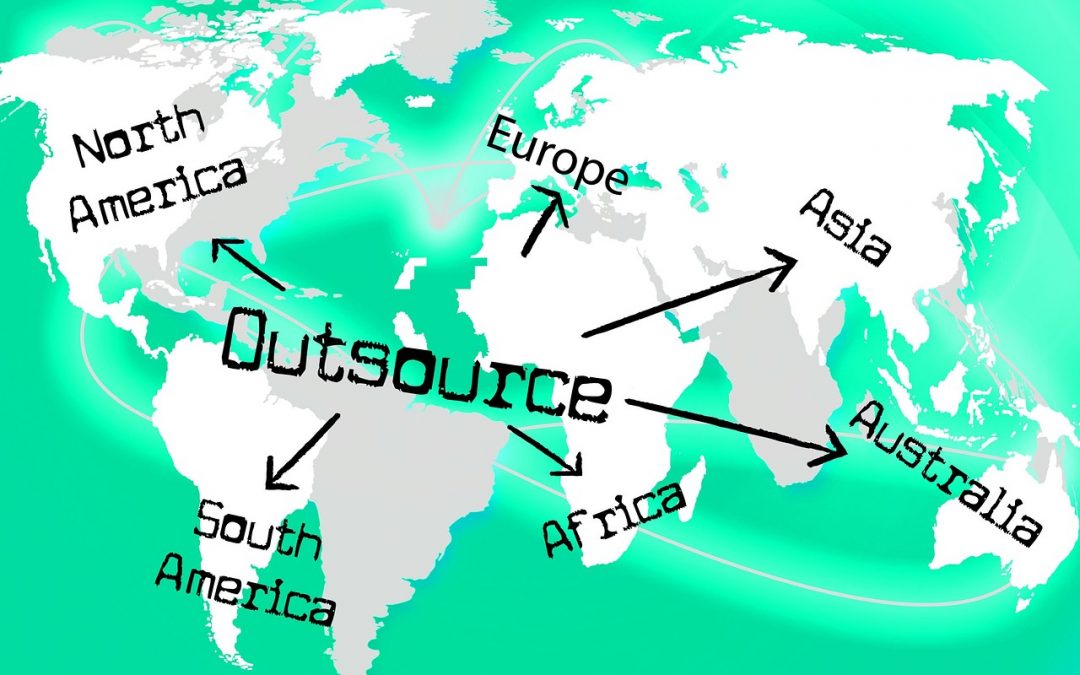These days, outsourcing is one way to increase efficiency and save money. And it’s easy to see why. Expanding your manpower pool entails spending money on things like office space, training, and benefits. Having your core group work on even non-essential tasks (like, say recordkeeping and archiving) can consume the time of your key personnel instead of letting them focus on their primary responsibilities. With outsourcing, however, the other company handles most of these costs and can take care of non-core responsibilities. You only pay for the work they do and any extra things you both agree on.
However, a caveat: Even though outsourcing is fast becoming an indispensable strategy for most companies, there are also risks involved. It’s important to be aware of these and take steps to manage them.
On the off chance that it hasn’t been clear from the start: It’s important to note that the very nature of outsourcing involves delegating part of your company’s work to a third party. There’s always a chance something could go wrong. And even though most outsourcing companies are trustworthy, it’s still important to protect yourself and put preemptive measures in place. Here are some of the more common risks of outsourcing and how to deal with them:
-
Different time zones
For some companies, having a remote team in a different time zone can be a problem. Imagine something urgent happens, but it’s nighttime for your team. You might have to wake them up to fix the issue, or you’ll have to wait until morning, which, in itself, could be quite risky or downright disastrous depending on the nature of your business. To avoid this, make sure your remote team is available anytime you need them. Some companies have people working different shifts so there’s always someone around to help, no matter the time.
-
Language barrier
English is an important language. About 1.5 billion people speak it, and almost all countries use it to communicate with businesses and organizations beyond their shores. But sometimes, even if someone is fluent in English, they might not get what you’re saying because it’s not their first language. Language-related nuances like idioms can be hard to understand. And since clear communication is vital for outsourcing to work well, this can be a big problem. To avoid any mix-ups, it’s smart to pick an outsourcing company that’s adept at speaking English, or—the most ideal scenario—your language.
-
Losing control
When you have some of your work done in a different place, you won’t have as much say in how it’s done. Even if the location of the outsourced team is just down the road, you still won’t be there to oversee things. And if the outsourcing company is on the other side of the world, that would be even harder to manage. To deal with this and as mentioned, it’s important to have good communication with your remote team. Pick an outsourcing company that’s known for communicating well. And if you need to (and you are able to), you can visit their place sometimes to make sure everything’s going as planned.
-
Relying too much on the outsourcing firm
As the leader of a company using outsourcing, keep in mind that your main team works in your office. The outsourcing firm is like a remote office where another team handles tasks for you. You’re the boss, and you can stop outsourcing whenever you want. So, entrusting a crucial project to another firm comes with risks. These important projects are what drive your company forward. If you outsource them, you might become too dependent on that firm, making it tough to change later if needed.
-
Data security
When you give work to another company, you usually have to share essential information related to the tasks they’ll be doing. This helps them do their job well, but it also means you need to be careful with your data.
Some projects have sensitive information, but it’s smart to be careful with all outsourced jobs. Use software to keep an eye on your data and have a strong security policy in place. Teach the outsourcing company how to handle the data properly, so it doesn’t end up in the wrong hands and cause trouble for your company. These precautions are essential for safeguarding against outsourcing risks.
-
Little or no technical documentation
Technical documentation is super important for the project. It tells the outsourcing company what they need to do when they need to do it, and other important stuff. It’s like a map for them to follow, so they don’t get lost. The more detailed the documentation is, the better the chances that the project will go smoothly.
If the documentation is vague, the remote team might not be sure what to do, which could cause problems or delays. So, it’s your job to make sure the documentation is clear and detailed. Don’t be afraid to ask the outsourcing company for their input and answer any questions they have. This will help avoid problems later and ensure the project gets done on time and meets all the requirements.
-
Hidden charges
This might surprise you, but there’s another kind of hidden charge to watch out for. Let’s say you hire an outsourcing firm that charges a standard rate per worker. However, some not-so-honest firms might hire unqualified people instead of the professionals needed for your project. They pay these unqualified workers less, which boosts their profits. To avoid this, make sure you have a say in who the outsourcing firm hires for your project. That way, you can make sure you’re getting the right people for the job.
When it comes down to it, the best way to avoid all the outsourcing risks we talked about is to pick the right company. Even if you follow all the other advice, choosing the wrong outsourcing firm can still be risky. So, take your time and do your homework before deciding. For example, consider SquareFish Inc. See what their past clients say and check out their previous projects. This will help you decide if they’re the right fit for you. Get in touch with us today for a free quote.
The Importance of Ongoing Monitoring and Oversight in Outsourced Projects
In outsourced projects, where you hire another company to do work for you, keeping a close eye on things is critical. Here’s why.
First off, let’s talk about the risks involved. When you give work to someone else, you trust them to get it done right. But things can go wrong. Maybe they don’t follow your instructions properly, or they don’t meet deadlines. There’s also the risk of data breaches or quality issues. These are all outsourcing risks you need to watch out for.
That’s where ongoing monitoring and oversight come in. By keeping a constant check on the progress of outsourced projects, you can catch any problems early on. This means you can step in and fix things before they become bigger issues. It’s like having a safety net to catch any mistakes before they cause actual harm.
Monitoring and oversight also help ensure that the work being done meets your standards. You can make sure it’s done the way you want it and that it meets any legal or quality requirements. This helps protect your reputation and keeps your customers happy.
So, don’t just hand off a project and forget about it. Stay involved and keep an eye on things every step of the way. It might take some extra effort, but it’s worth it to avoid outsourcing risks and ensure that your projects are a success.
How Flexibility and Contingency Plans Drive Success in Outsourcing Projects
Flexibility and contingency plans are like secret weapons in outsourcing projects. Here’s why they’re so important.
When you give work to another company, things don’t always go as planned. There can be unexpected problems, like delays, changes in requirements, or even emergencies. These are all outsourcing risks you need to be ready for.
That’s where flexibility comes in. Being flexible means being able to adjust to changes and challenges without getting thrown off course. It’s like being able to bend without breaking. When unexpected things happen, a flexible approach allows you to adapt quickly and find solutions.
Contingency plans are another key part of the puzzle. These are backup plans you put in place just in case things go wrong. It’s like having a Plan B ready to go if Plan A doesn’t work out. Contingency plans help you deal with unexpected challenges without getting stuck.
Together, flexibility and contingency plans help drive success in outsourcing projects. They allow you to stay on track even when things don’t go according to plan. Instead of getting stuck or giving up, you can keep moving forward and find ways to overcome obstacles.
So, next time you’re working on an outsourcing project, remember the power of flexibility and contingency plans. They might just be the difference between success and failure.






